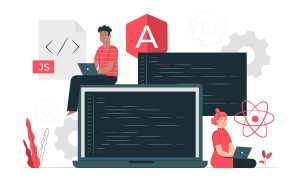The computer is the ruler of the present-day internet-based applications and what runs this ruler is the field of data science that is based on a number of components like that of analytics and statistics. These are used continuously by taking the help of different tools for data science-based applications. Data science is the use of information from various sources and then gathering more and more information so that it can be used for some particular cause, ie for academic or professional areas. Data science involves a number of components out of which, analytics and statistics are two of the most important parts. It is quite difficult to consider one of the two. Rather it would be quite impossible to choose one of the two, as one is based on formulating results in terms of quantitative aspects, while on the other hand, one is based on the formulation of results, on the basis of qualitative aspects.
How Analytics and Statics are Different to each other
So, statistics and analytics are two important hands or components of data science that have worked for many years now. Analytics can be descriptive, predictive or prescriptive. The first try to describe something while the second tries to predict results. The third tries to prescribe based on certain scenarios. On the other hand, statistics can be in the form of random, variation. And they can be descriptive or inferential. Inferential can deduce some results.
This article will be a broad discussion on analytics as well as statistics. After that, it will also consider analysis upon these two branches to put up a check whether these two branches are really the same or different from one another. In terms of their similarities or differences, they will be analyzed further for discussion. The first most important part of the discussion is that what analytics and statistics are. The word “statistics” relates to certain calculations that are very important to understand the exact position of a scenario, a business or a project means that has been undertaken or executed by someone.
In terms of machine learning, there are a number of search engines of which Google is by far the most common and most popular of all means. One can use search engines to search for any data that one requires and then particularly useful for the business workplace, professional and personal means. This is also based on certain criteria. For example, a search engine can work well and serve useful only when it highlights all the important information and data that the user is trying to get from it. This sort of information is based on a certain pattern of coding skills and this gets processed automatically within a fraction of few nanoseconds, for one gets efficiency and usefulness, or ability to deliver results as well as the speed by which it works. There are certain search engines that are running until now, while some have been discarded. However, Google is still the most popular by far.
Apart from that, analytics is also referred to as exploratory analytics when one can use analytics to explore the deep inside of certain areas that are not possible through statistical analysis. It starts by considering a hypothesis and works so that one can come to proper conclusions as well as results after observing and understanding the concepts.
Analytics, as well as statistics, are used to provide data and to share information. However, statistics is mainly for statistical calculations while analytics is a concept that is slightly different in its approach. For example, analytics analyze on some particular situation. They come up to a point that might be contradicted by the statisticians. So this type of contradiction is quite natural and one has to go through the analytics as well as the statistics to understand the falsifying result or the true result, or the similarity existing between both.
So it’s not quite easy to differentiate between analytics and Statistics because there is a very thin line of difference between the two. However, they both can be used as a means of components that are used to develop data and information that users need rapidly. So the basic work of an analyst is to use a certain amount of data from a number of paths and then process it in order to give a summary or a compiled form of the overall gist of the method. On the other hand, the work is handled by calculating and interpreting numerical figures on several numerical aspects in order to come to a proper numerical based conclusion rather than basing the result on qualitative spheres.
This is served through a number of statistics training programs that one might join in order to improve their professional or personal skills. Analytics is not based on numerical concepts. The main objective of analytics is to analyze the particular situation or problem by first considering a hypothesis. This can be a positive or negative hypothesis. After that, stepwise observations are made so that a final result can come. This result might be known and this is based on a qualitative approach.
So there is a thin line of basic difference between Analytics and statistics. Statistics are based on a numerical approach while analytics is entirely based on a qualitative approach or feedback gathering. The results acquired from people on how they work or how they deal with data technology and other such aspects are involved in the concept of data science.
Someone has to consider both these aspects together. Apart from this, if we consider these aspects together, then we will have a lot of data on our hands. So this will result in accumulation of data and at the same time, we will also have qualitative data. So this kind of data is the result of a combination of a lot of data that we have gathered for long period of time. It will also be in the form of a culture of data splitting. So, these areas are quite important in terms of data science. Statistics, as well as for analytics, are very two important concepts and both are required to get a clear analysis of the overall data that one is looking forward to. However one also has to be aware of legal provisions that involve the acceptance of both in the case of several works.































































